Introduction to Barcelona
Ah, Barcelona – a city where the past and the present dance in the streets, and where architectural marvels stretch skywards, narrating tales as old as time. Situated on the northeastern coast of Spain, this dazzling Mediterranean gem has long captivated the hearts of visitors from around the globe.
The city’s historical evolution
Barcelona – a name that resonates with history, culture, and vibrant urban life. But the contemporary allure of this cosmopolitan capital has roots that stretch deep into antiquity.
Barcino: The roman foundation
The earliest recorded foundations of Barcelona date back to the late 1st century BC, when it was known as Barcino. The Romans established this settlement upon the coastal plains of the Iberian Peninsula. Fragments of this ancient civilization are still palpable today, especially in the city’s Gothic Quarter where remnants of Roman walls and aqueducts quietly narrate tales from over two millennia ago.
Medieval era: gothic splendor and maritime power
As the Roman Empire’s influence waned, a tapestry of Visigothic, Moorish, and Carolingian dominations left their imprint on the city. By the Middle Ages, Barcelona emerged as a significant maritime power in the Mediterranean, becoming a cornerstone of the Crown of Aragon. The grandeur of this era can be seen in the city’s majestic Gothic cathedrals, narrow medieval streets, and historic plazas that reverberate with stories of knights, merchants, and sailors.
Renaissance to modernism: artistic awakening
The Renaissance ushered in an era of artistic and cultural awakening. However, it was during the late 19th and early 20th centuries that Barcelona truly began its romance with groundbreaking architecture. Catalonian artists and architects, inspired by the broader Art Nouveau movement but desiring a regional touch, birthed Modernisme. The likes of Antoni Gaudí, Lluís Domènech i Montaner, and Josep Puig i Cadafalch, transformed the city’s landscape with their avant-garde designs, blending organic motifs with innovative structures. The result? Iconic landmarks like Sagrada Família, Casa Batlló, and Hospital de Sant Pau, which today define Barcelona’s unique architectural identity.
Contemporary Barcelona: a global metropolis
Post the Spanish Civil War and the Francoist regime, Barcelona, like a phoenix, underwent a renaissance. The city modernized rapidly, preparing itself to take center stage during the 1992 Summer Olympics. Today, it stands as a global city, seamlessly juxtaposing its rich history with cutting-edge design, technology, and culture.
In conclusion, Barcelona’s evolution from the ancient Roman town of Barcino to the pulsating heart of Catalonia is a testament to its resilience, adaptability, and insatiable thirst for innovation and progress. Every brick, every street, and every facade in this mesmerizing city tells a story, making Barcelona not just a place to visit, but an experience to be lived.
The catalan influence and its imprint on culture and architecture
While Spain boasts many beautiful cities, Barcelona’s unique charm lies in its Catalan identity. The people of Catalonia, with their distinct language and traditions, have added vibrant hues to the Spanish mosaic. This cultural richness is prominently visible in the city’s festivals, gastronomy, and most notably, its architecture. The architectural style of Modernisme – Catalonia’s answer to the Art Nouveau movement – leaves a dramatic imprint on the city. Names like Antoni Gaudí and Lluís Domènech i Montaner became synonymous with this movement, shaping much of Barcelona’s iconic skyline.
A sneak peek into the Top 10 Highlights covered in this article
- La Sagrada Família: Gaudí’s magnum opus that fuses Gothic and curvilinear Art Nouveau forms.
- La Rambla: A lively boulevard, pulsating with life and local flair.
- Barcelona Cathedral: An emblem of Gothic architecture, anchoring the city’s historic heart.
- Parc de la Ciutadella: A verdant escape boasting architectural gems and the Catalan Parliament.
- National Art Museum of Catalonia: A treasure trove showcasing a millennium of Catalan art.
- Modernist Trail: Traverse Park Güell, La Pedrera, and more in this journey through Modernisme.
- Joan Miró Foundation: Celebrating the abstract brilliance of one of Catalonia’s finest artists.
- Picasso Museum: Delve into the early years and evolution of the legendary Pablo Picasso.
- Palau de la Música Catalana (www.palaumusica.cat): A visual and acoustic marvel, a true testament to Modernisme at its best.
- Museum of Contemporary Art (MACBA) and Centre of Contemporary Culture (CCCB): Experience the cutting-edge of Barcelona’s vibrant art scene.
Prepare to embark on a journey like no other, as we unveil the top 10 must-see highlights of Barcelona – a city where every corner whispers stories of history, art, and boundless passion.
La Sagrada Família: a testament to Gaudí’s vision and catalonia’s spirit
One cannot think of Barcelona without visualizing the towering spirals and intricate facades of La Sagrada Família. This basilica, still under construction after more than a century, stands as an emblem of the city’s audacity, creativity, and undying spirit.
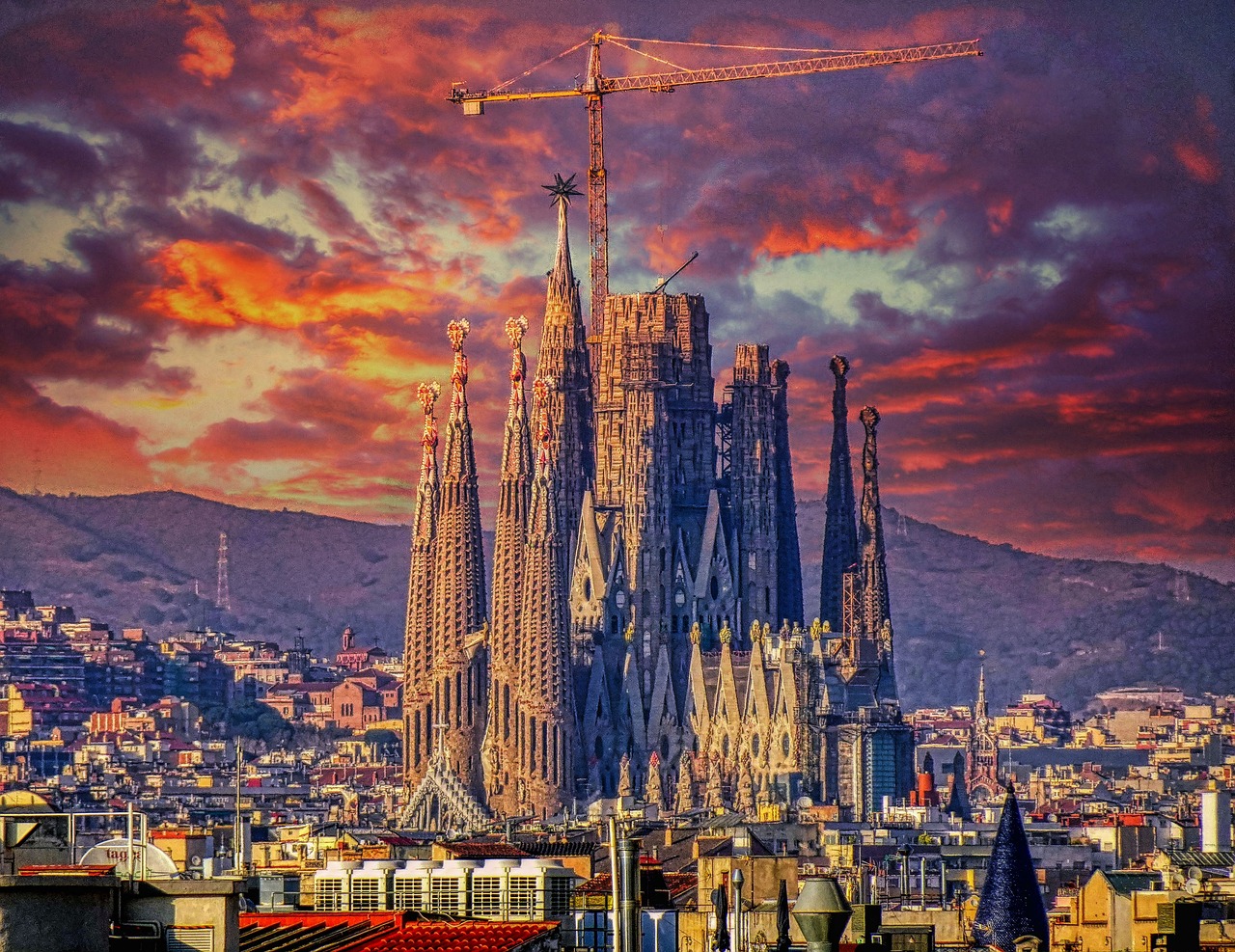
The history and significance
Commencing in 1882 under architect Francisco de Paula del Villar, the project of La Sagrada Família was soon taken over by a then relatively unknown 31-year-old architect – Antoni Gaudí. Over the next 43 years until his untimely death in 1926, Gaudí devoted himself to this magnum opus, transforming the initial neo-Gothic plans into a unique blend of Gothic and Art Nouveau forms.
But La Sagrada Família is not just an architectural masterpiece; it’s a spiritual beacon. Envisioned as a “cathedral for the poor,” Gaudí imagined a space filled with light and color where everyone, irrespective of their socio-economic status, could find solace and inspiration.
Today, the basilica’s significance transcends religious boundaries. It’s a UNESCO World Heritage Site and attracts millions from across the globe, drawn not only by its religious significance but by its architectural prowess and the story of a city’s unwavering commitment to fulfilling the dream of one of its most iconic sons.
Gaudí’s genius and vision
To understand La Sagrada Família is to delve deep into the mind of Antoni Gaudí. Often dubbed “God’s Architect,” Gaudí’s work was deeply rooted in nature and spirituality. Every corner, curve, and color of the basilica has a purpose, a story, and an inspiration sourced from the natural world. From the helicoidal columns inspired by trees reaching up to the heavens to the intricate facades depicting the life, passion, death, and resurrection of Jesus Christ – every detail is a testament to Gaudí’s genius.
What sets La Sagrada Família apart from other architectural wonders is its continuous evolution. Gaudí once said, “My client is not in a hurry,” referring to God. Knowing he wouldn’t complete it in his lifetime, he left models, drawings, and instructions for future generations to continue his work. Today’s architects, using modern technology alongside Gaudí’s original techniques, are aiming to complete the basilica by 2026, marking the centenary of Gaudí’s death.
Visiting La Sagrada Família offers more than just an architectural tour; it’s a journey through time, art, faith, and the ever-evolving spirit of Barcelona. As the sunlight filters through the stained glass windows, casting a kaleidoscope of colors, one can’t help but feel a connection – not just to Gaudí’s vision – but to the heartbeat of Catalonia itself.
La Rambla: Barcelona’s vibrant lifeline and the gateway to gastronomic delights
Amidst the bustling energy of Catalonia’s capital city lies La Rambla, a tree-lined pedestrian boulevard that dances to the rhythm of Barcelona. It stretches approximately 1.2 kilometers, linking Plaça de Catalunya to the Christopher Columbus Monument at Port Vell. With its constant whirlwind of activity, from street performers to lively markets, La Rambla is not just a street; it’s the very pulse of the city.
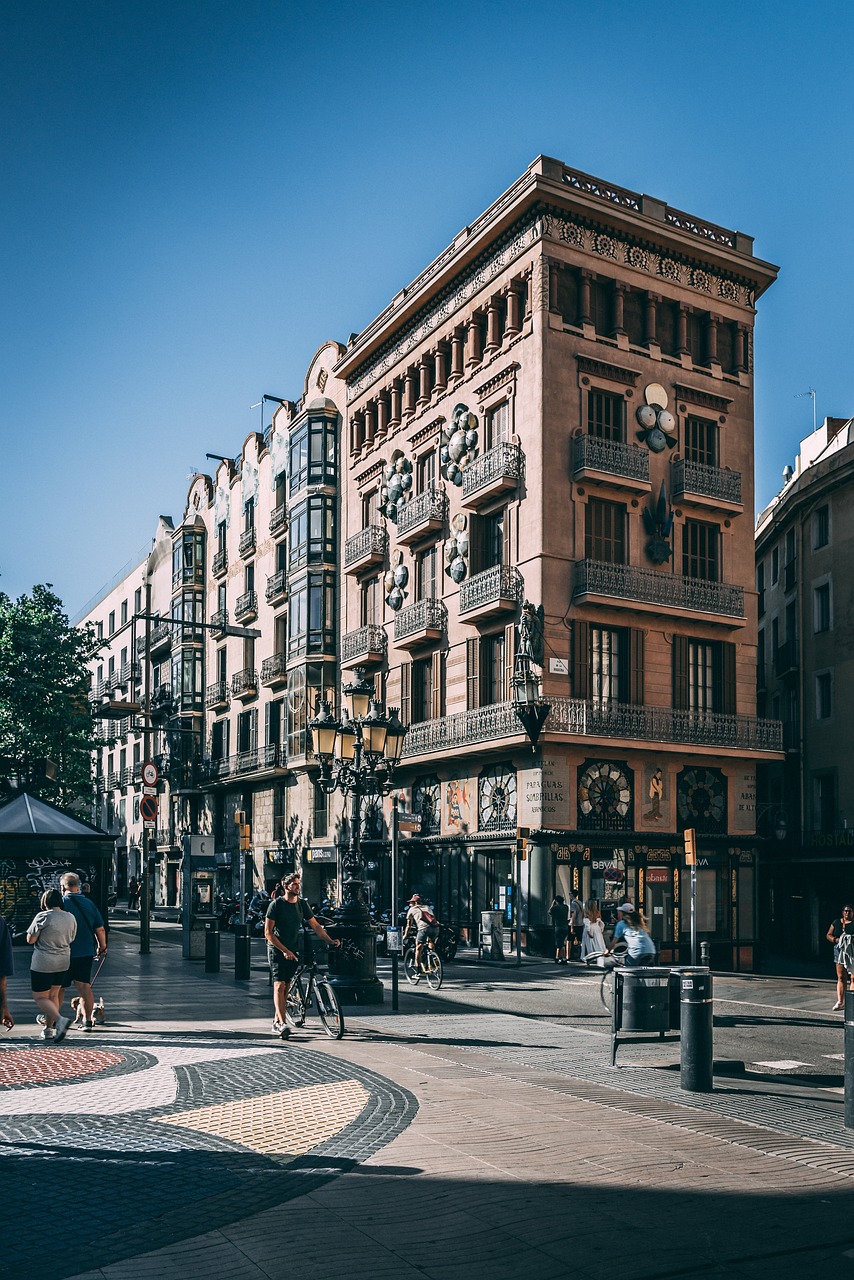
The pulsating heart of Barcelona
A walk down La Rambla is akin to flipping through the pages of Barcelona’s rich cultural diary. Here, amidst the shade of tall plane trees, you’ll find an ensemble of locals and tourists alike, each weaving their own story. From the mosaic works of Joan Miró underfoot to the Liceu Theatre – one of Spain’s most eminent opera houses – history, art, and daily life converge on this dynamic promenade.
But beyond the visual and historic treats, La Rambla’s true allure lies in its ability to cater to the senses. The gentle hum of conversations, the vivid array of flowers at kiosks, the rhythmic beats from impromptu musical performances – every step immerses visitors deeper into the Barcelonian experience.
Mercado de la Boquería: a sensory feast
Just off La Rambla, a grand iron entrance beckons you into a world of flavors and aromas – the iconic Mercado de la Boquería. Officially known as Mercat de Sant Josep de la Boqueria, this market has been the epicenter of Barcelona’s culinary scene since the 13th century.
As you meander through its aisles, your senses are greeted with a vibrant tapestry of colors and scents. Fresh seafood glistening under the lights, towers of exotic fruits and vegetables, seasoned butchers meticulously preparing cuts, and stalls with wheels of cheese, nuts, and olives create a mosaic of gastronomic wonder. It’s no exaggeration to say that to truly know Barcelona, one must experience the sensory overload that is the Boquería.
Don’t just window-shop. Dive in. Taste the jamón ibérico, sip on freshly squeezed exotic juices, or indulge in traditional tapas at one of the market’s bars. It’s a haven for food enthusiasts and a testament to Barcelona’s rich culinary heritage.
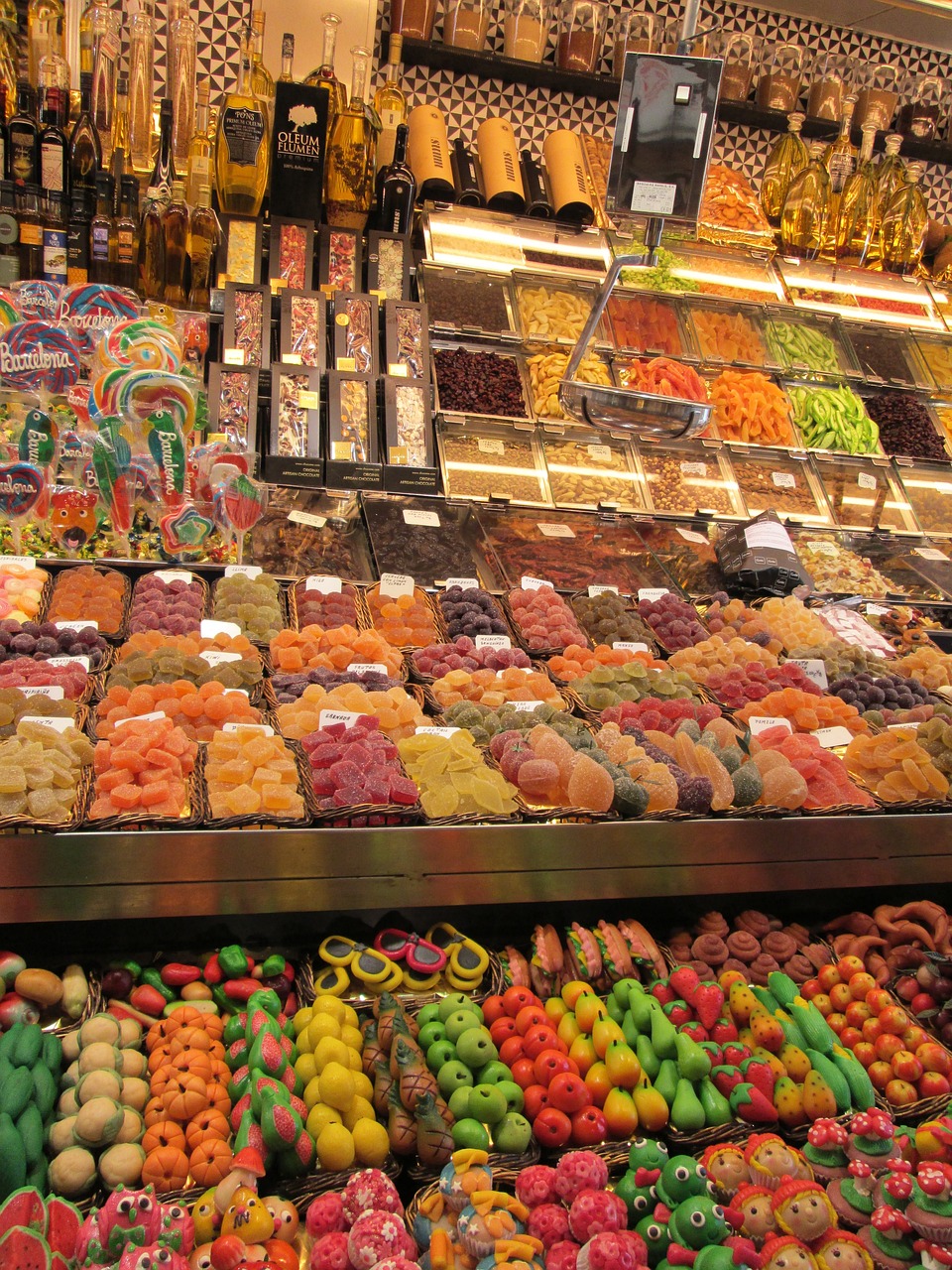
For those who wish to delve deeper into Spain’s food culture, there are various culinary experiences available. From guided tours detailing the history of the market and its produce to cooking classes that harness the Boquería’s fresh ingredients (some of which can be booked via SpainSeeker.com), there’s no end to the epicurean adventures awaiting visitors.
Barcelona Cathedral: a gothic marvel amidst the labyrinth of history
Nestled in the heart of the city, the Barcelona Cathedral stands as a beacon of the past, its spires reaching for the sky and its stone walls whispering tales of yesteryears. With its foundation dating back to the 13th century, this iconic structure embodies the very essence of Gothic architecture, making it an indispensable stop on any Barcelona itinerary.
Gothic architecture and its historical importance
The Barcelona Cathedral, or the Cathedral of the Holy Cross and Saint Eulalia, is a masterpiece of Gothic architecture. One can’t help but be mesmerized by its intricate facades, the grand rose window, and the ribbed vaults that elegantly sprawl across the ceiling. Every detail, from the ornate chapels to the cloister with its murmuring fountains and 13 white geese, showcases the meticulous craftsmanship synonymous with the Gothic era.
Historically, the cathedral stands on a site that has been sacred for centuries. Before the Gothic marvel we see today, earlier Christian churches and even a Roman temple once occupied this ground. The cathedral, however, isn’t just an architectural wonder; it’s a chronicle of Barcelona’s spiritual and cultural evolution.
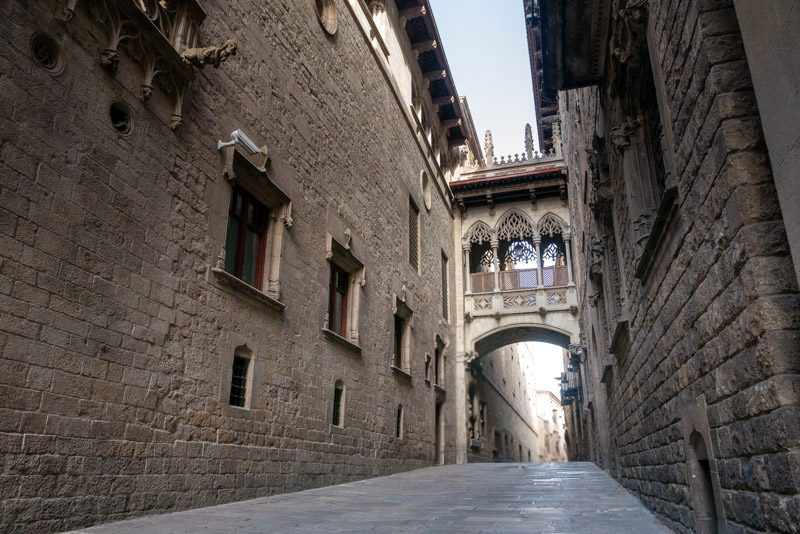
During the 14th and 15th centuries, Barcelona was experiencing its Golden Age, with considerable growth in trade and maritime prowess. The construction of the cathedral during this time underlines the city’s burgeoning importance and wealth. Today, it serves not only as a place of worship but also as a testament to the city’s glorious past and its lasting legacy.
The charm of the surrounding Gothic Quarter
Venture outside the hallowed walls of the cathedral, and you find yourself amidst the winding alleys and ancient squares of the Gothic Quarter. With its narrow medieval streets, historic buildings, and ambient squares, the Barri Gòtic, as it’s locally known, transports you back in time.
This district is a treasure trove of historic landmarks – from Roman remnants and medieval palaces to the vibrant Plaça Reial. The charm of the Gothic Quarter isn’t just in its historic structures, but also in its vibrant present. The atmospheric streets echo with the sounds of laughter, music, and the clinking of glasses, as cafes, tapas bars, and boutiques breathe modern life into this ancient district.
Lose yourself in its labyrinth, and you’ll stumble upon hidden gems: secluded courtyards, artisanal shops, and fragments of the old Roman wall. Each corner tells a story, each stone has a tale, and every experience in this district blends the ancient with the contemporary.
Parc de la Ciutadella: the green lung of Barcelona’s urban landscape
In the midst of Barcelona’s dynamic urban hustle and architectural wonders lies a haven of tranquility and natural beauty – the Parc de la Ciutadella. Spanning 70 acres, this park offers both locals and tourists a chance to escape the city’s frenetic pace and revel in a slice of nature, art, and history.
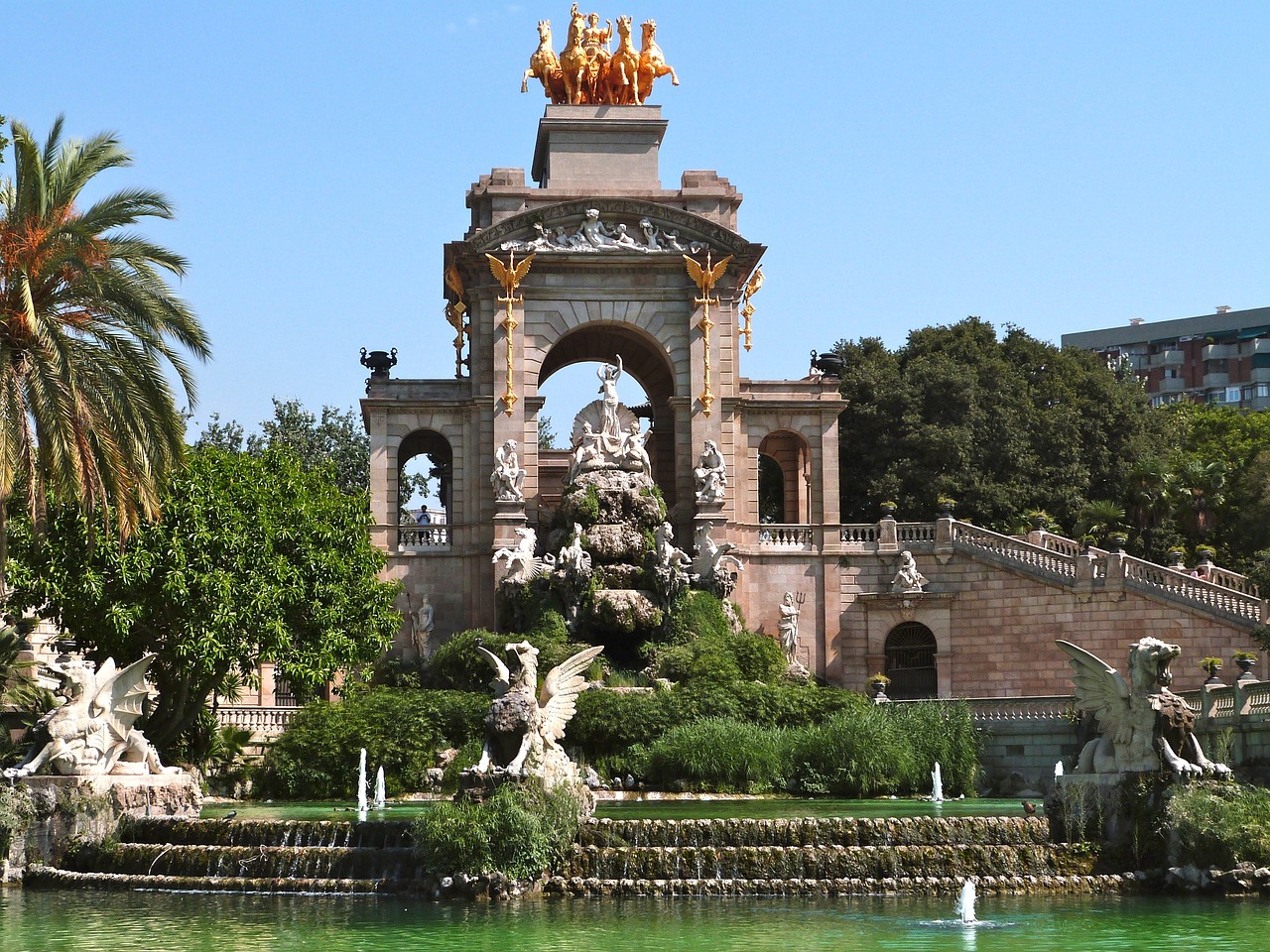
A green oasis in the city’s heart
Stepping into the Parc de la Ciutadella feels like entering a different world. Grand tree-lined avenues give way to lush green meadows, dotted with ornate fountains and sculptures. The park’s centerpiece, the monumental Cascada Fountain, is a work of art in itself, designed by Josep Fontserè with a young Antoni Gaudí as his assistant.
Whether you’re a jogger tracing the park’s myriad paths, a family picnicking on its manicured lawns, or simply a traveler resting under the shade of its towering trees, the Parc de la Ciutadella offers a rejuvenating break. The shimmering pond, where rowboats gently glide, adds a touch of romantic charm to this verdant sanctuary.
For the flora enthusiasts, the park houses an umbrageous greenhouse, or “Umbracle,” and a geodesic dome known as the “Hivernacle.” These structures, reminiscent of Victorian-era conservatories, shelter a myriad of plant species, turning the park into an educational journey through diverse ecosystems.
The Catalan Parliament and the Zoo
Within the grounds of the Parc de la Ciutadella, the historical and the recreational converge. The Catalan Parliament building, a neoclassical structure with imposing columns and a serene façade, stands testament to the region’s political history. Originally a fortress, the building was repurposed in the late 19th century, symbolizing a shift from military power to civic governance.
A stone’s throw away is the Barcelona Zoo. Home to over 4,000 animals representing 400 species, the zoo is a world in itself. From majestic lions and elusive leopards to tropical birds and aquatic wonders, the zoo promises an adventure for visitors of all ages. Notably, it was once home to Snowflake, the only known albino gorilla, making it a particularly significant institution in the world of conservation.
The combination of serene green spaces, historical edifices, and the bustling life of the zoo makes the Parc de la Ciutadella a microcosm of Barcelona itself – diverse, vibrant, and ever-evolving.
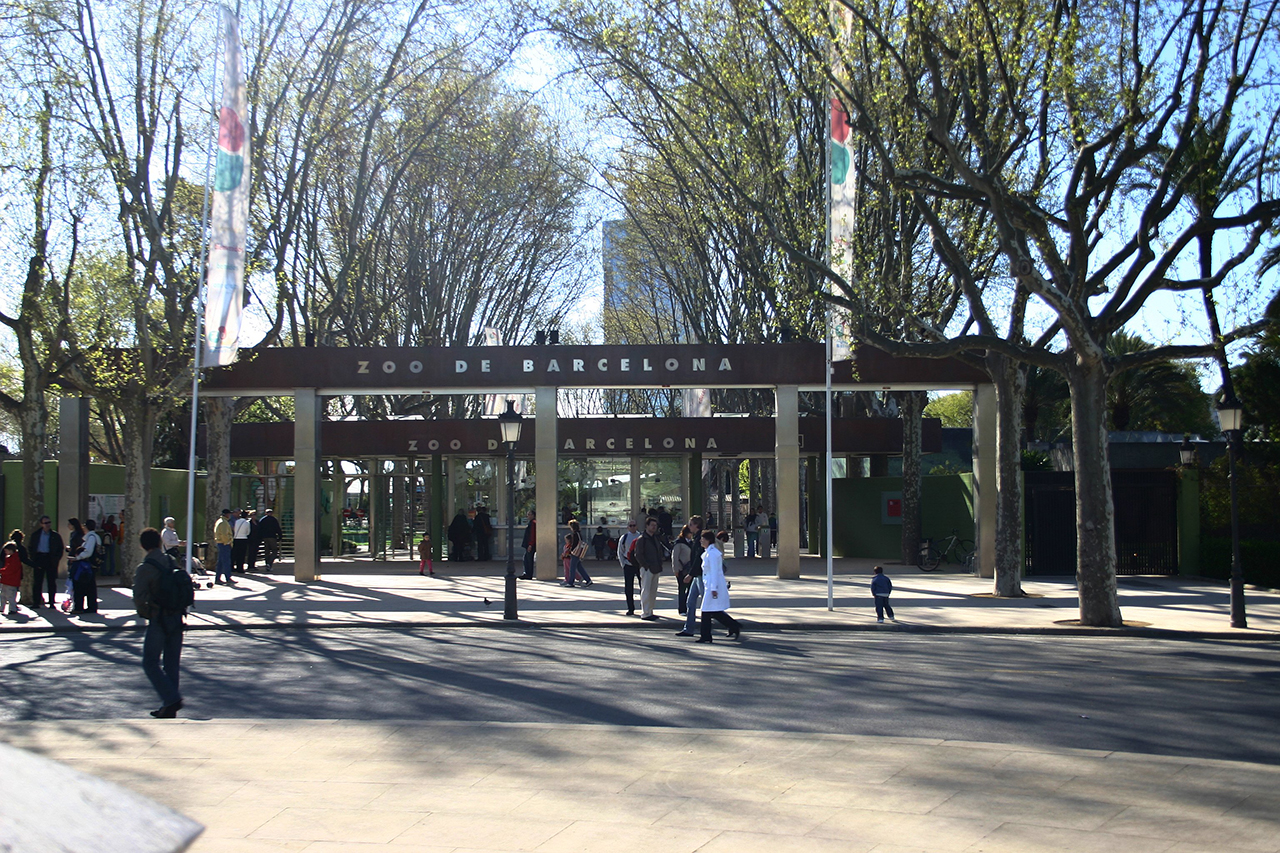
National Art Museum of Catalonia (MNAC): a masterpiece in every eense
Perched atop Montjuïc Hill, overlooking the cascading Magic Fountain and providing panoramic vistas of Barcelona’s skyline, stands the monumental National Art Museum of Catalonia (Museu Nacional d’Art de Catalunya or MNAC). This majestic palace, reminiscent of Renaissance-style architecture, is more than just an architectural marvel; it’s a doorway into the heart of Catalan artistic brilliance, from ancient Romanesque frescoes to the swirling forms of Modernism.
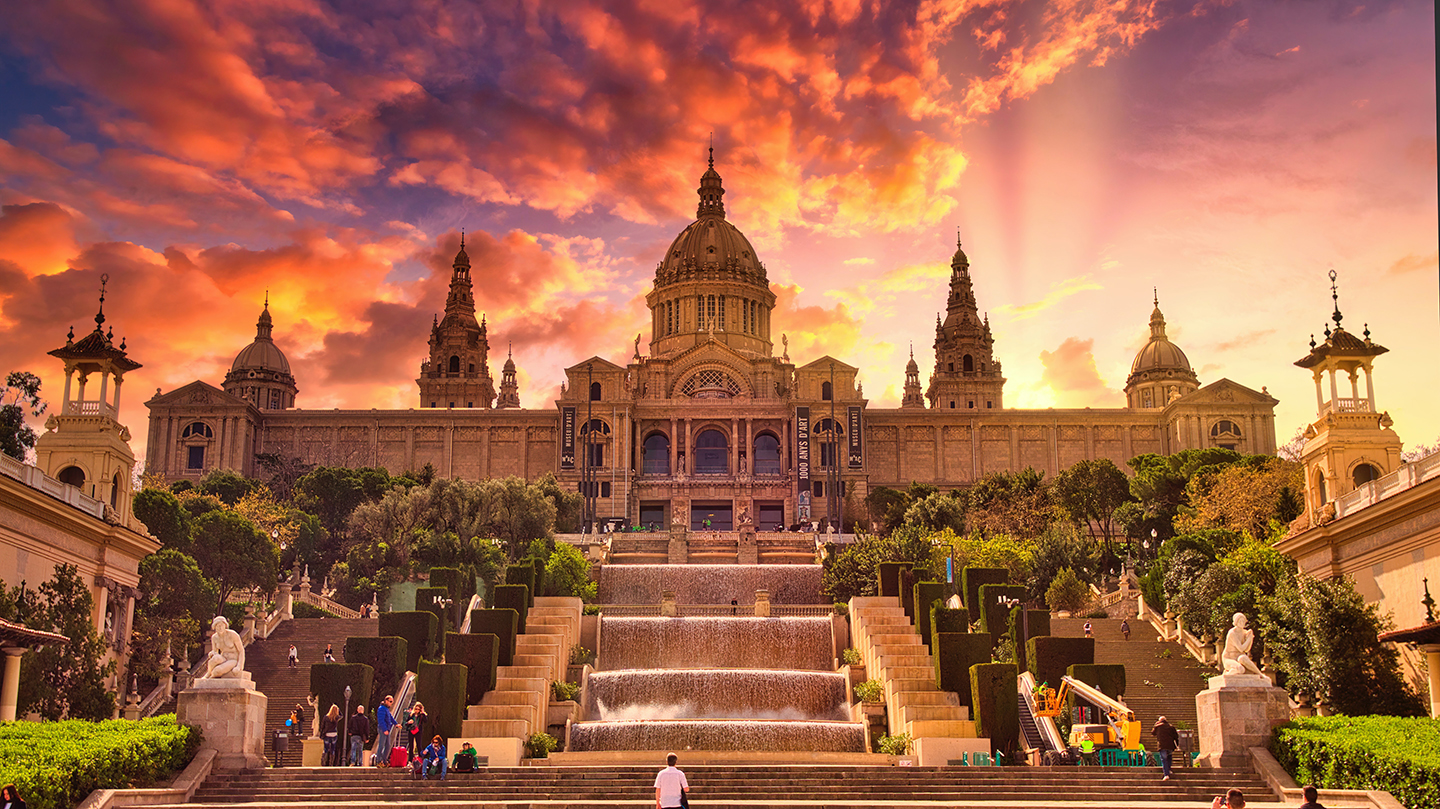
From Romanesque to Modernism: a journey through catalan art
Initiating your voyage through MNAC’s galleries, you’re instantly transported to the medieval era. The museum’s Romanesque collection is unrivaled, boasting a multitude of frescoes salvaged from remote Pyrenean churches. These evocative pieces, with their simplistic yet poignant depictions of biblical tales, echo the spirituality and devoutness of bygone eras. The murals, set in their original semi-circular apses, envelope you in an ethereal, spiritual aura, harking back to a time when art was a primary medium of storytelling and devotion.
Transitioning into the Gothic period, the narrative becomes more intricate. Religious themes still dominate but are now complemented by the emerging bourgeoisie’s commissioned portraits. Intricate altarpieces, woodcarvings, and metalworks of this era showcase the evolution in artistic techniques and the shifting societal dynamics.
The Renaissance and Baroque sections display a blend of local and foreign influences. As Catalonia opened up to European trade routes, it absorbed various artistic styles, which Catalan artists skillfully integrated with their unique flair. Portraits become more realistic, the color palettes more diverse, and themes more varied, encapsulating everything from biblical tales to everyday scenes.
However, it’s the Modernism gallery that truly captures the soul of Catalan creativity. Modernism, a movement analogous to Art Nouveau but distinctly Catalan in essence, is characterized by organic forms, vibrant colors, and a flirtation with fantasy. This era witnessed the genius of artists like Ramon Casas and Santiago Rusiñol. Their works, often portraying the effervescent life of Barcelona’s cafes and cabarets, exude vivacity and whimsy.
Beyond painting and sculpture, the museum dedicates sections to other forms of artistic expression, such as photography, poster art, and coinage, offering a holistic understanding of Catalonia’s rich cultural tapestry.
In essence, the MNAC isn’t just a museum; it’s a time machine. With every step, you’re whisked away through epochs, witnessing the ever-evolving soul of Catalan art and gaining insights into the socio-political undercurrents that shaped these artistic expressions.
Modernist Barcelona: Gaudí’s dreamland and the metamorphosis of a city
As the sun casts its first rays over Barcelona, it doesn’t merely illuminate a city. It unveils a dreamscape, a living tapestry of artistry molded over time but predominantly shaped during a transformative epoch: the Modernist period. During this era, Barcelona didn’t just witness the construction of buildings; it saw the birth of legends.
Additionally, you can find more information about Modernist Barcelona in this article.
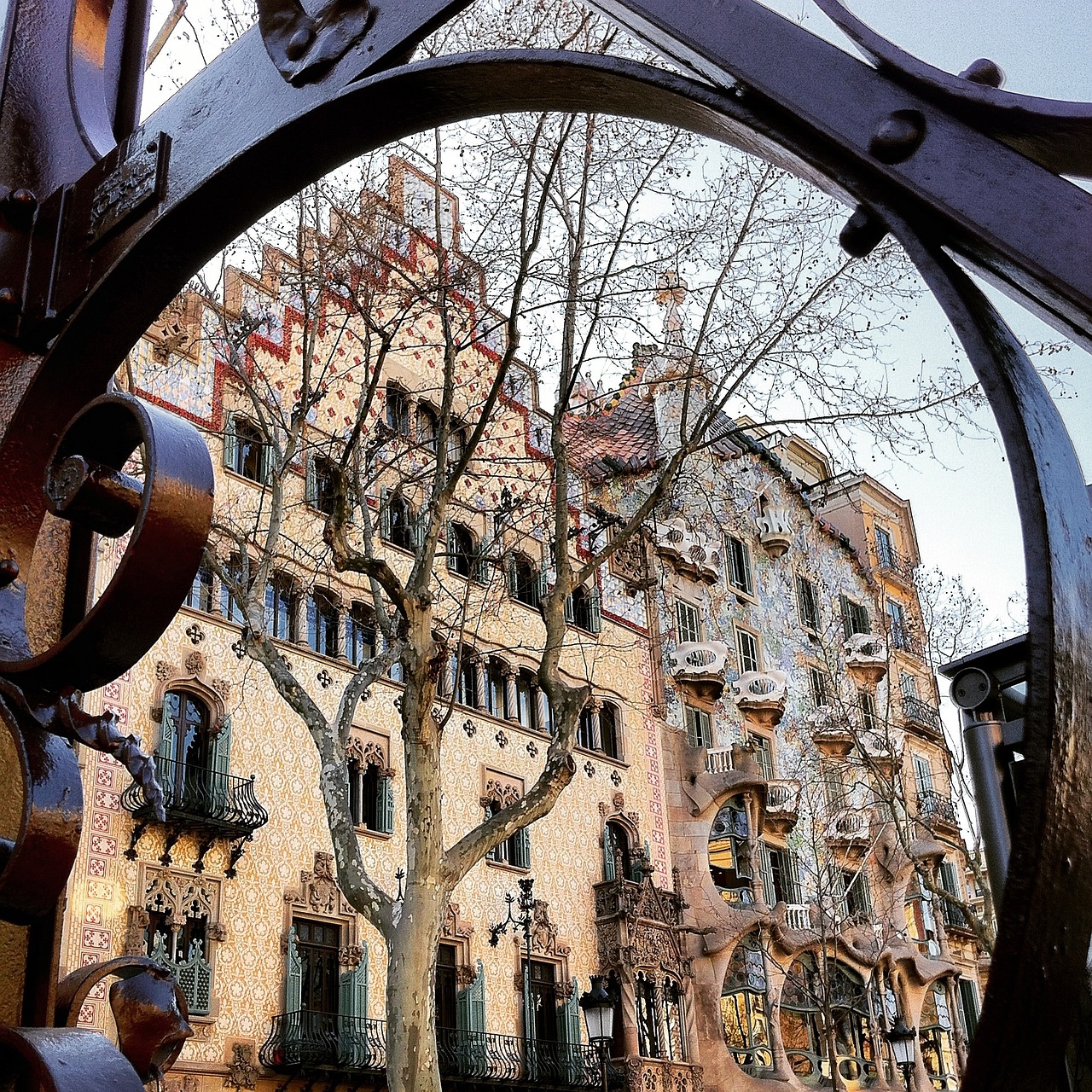
Gaudí and other Modernist architects: titans of imagination
At the forefront of this artistic revolution stood Antoni Gaudí, a name synonymous with Barcelona’s identity. A maestro sculpting his symphony in stone and ceramic, Gaudí’s masterpieces are spread across the city, each narrating a tale of inspiration, faith, and sheer genius.
- Park Güell: Envision a park not merely as a space of greenery but as a celestial realm, and you have Park Güell. Conceived initially as a housing estate, this mosaic wonderland, adorned with vibrant tiles, undulating benches, and gingerbread-house gatehouses, offers panoramic views of the city. The sinuous dragon at the entrance, crafted with colorful tiles, has become emblematic of the park and the city’s artistic spirit.
- La Pedrera (Casa Milà): Gaudí’s disdain for straight lines finds exquisite expression in La Pedrera. With its wavy façade, intricate wrought ironwork, and chimneys resembling knights guarding a castle, it’s not just an apartment building; it’s an architectural ballet, a dance of form and function.
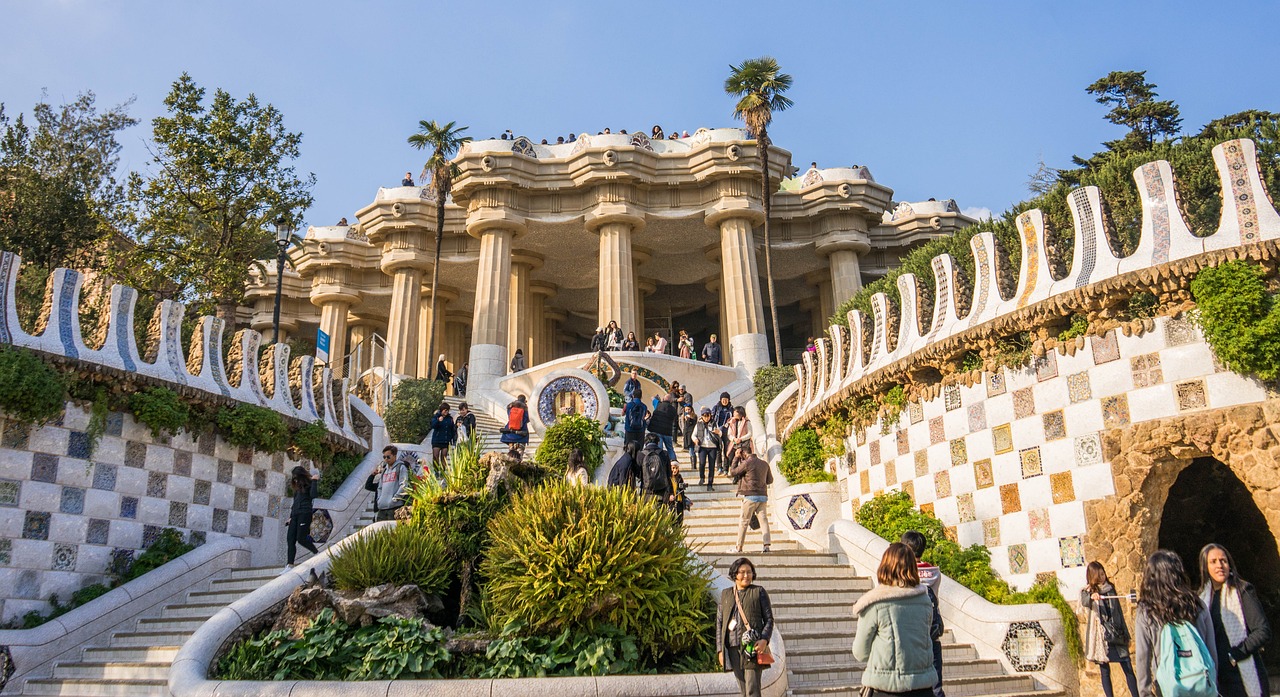
However, Gaudí wasn’t alone. His vision was complemented and enhanced by other remarkable architects like Lluís Domènech i Montaner and Josep Puig i Cadafalch.
- Hospital de Sant Pau: Just a stone’s throw away from the Sagrada Família, this former hospital, designed by Montaner, is a marvel of Modernist architecture. It’s a complex where the curative power of beauty was believed to aid healing. With its ornate pavilions, connected by underground tunnels and surrounded by lush gardens, it was a haven for patients.
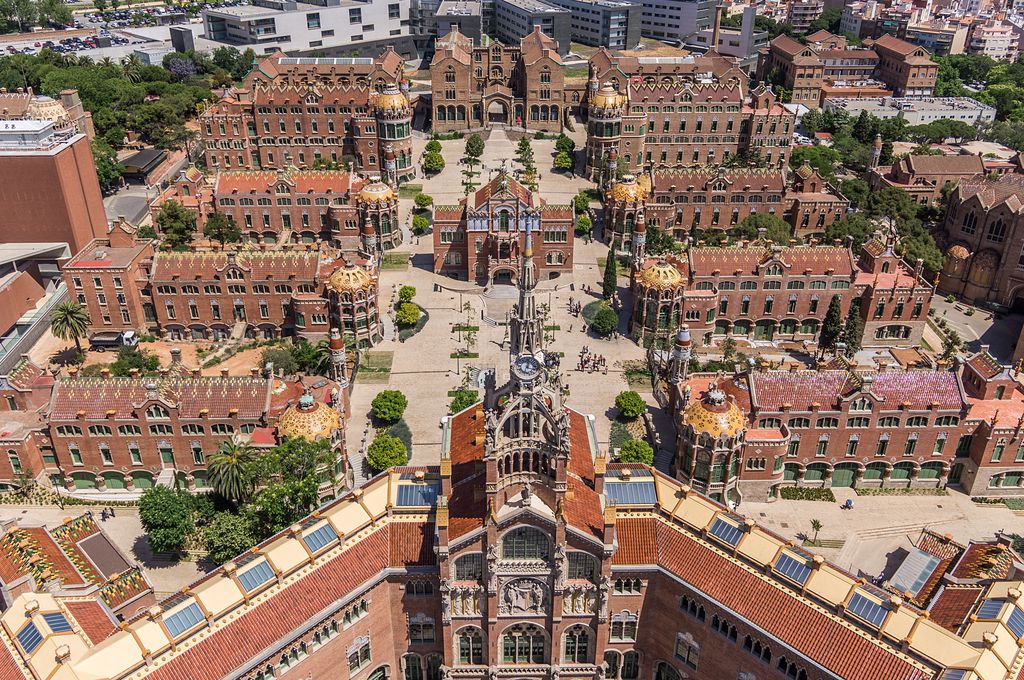
The impact of Modernism on Barcelona’s identity
More than just an architectural style, Modernism became the voice of a nation’s aspirations, struggles, and cultural renaissance. As Catalonia grappled for its identity and autonomy, these edifices became symbols of national pride and cultural resurgence.
Modernist works weren’t mere buildings; they were declarations. Declarations of innovation, of breaking free from conventional shackles, and of harmonizing nature, faith, and urbanism. The style permeated not only architecture but also other forms of art, from painting and sculpture to decorative arts and literature.
Today, as you walk the Passeig de Gràcia, flanked by the Casa Batlló and Casa Amatller, or traverse the labyrinthine streets of the Eixample district, every façade, every mosaic, and every turret tells a story. A story of a city’s metamorphosis, a tale of a society’s cultural evolution.
Joan Miró Foundation: celebrating a catalan icon
Tucked away on the picturesque Montjuïc hill, the Joan Miró Foundation (Fundació Joan Miró) stands as a glowing testament to the genius of one of Catalonia’s most revered artists. It’s more than just a museum; it’s a deep dive into the surrealistic world of Miró, unraveling the intricacies of his life, his inspirations, and the unmistakable imprint he left on the art world.
Joan Miró: an artist, sculptor, and ceramicist, whose vibrant colors and dream-like symbols have come to define a unique style, rebellious yet rooted in his Catalan heritage. Born in Barcelona in 1893, Miró’s early life was filled with the sights and sounds of this coastal city, which later became a recurring theme in his works. From the blue of the Mediterranean to the fiery reds of Catalonia’s festivities, his palette was as much a product of his surroundings as his imagination.
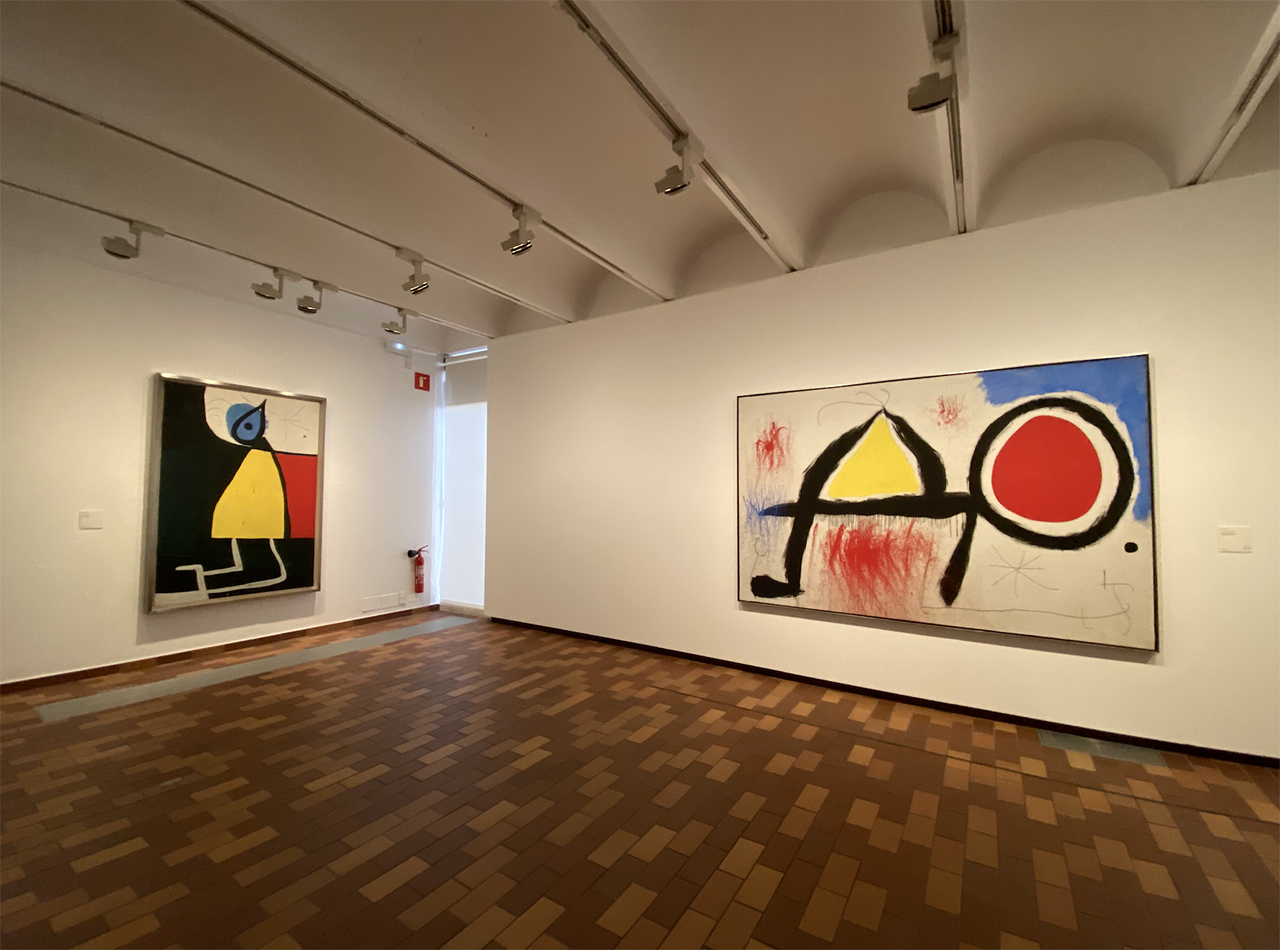
The Foundation came into existence thanks to Miró’s vision of creating a space where young artists could explore contemporary art. Opened in 1975, the building itself, designed by his friend and architect Josep Lluís Sert, is a modernist marvel, harmoniously fitting with Miró’s art. With its white walls and terraces overlooking Barcelona, it offers an unparalleled journey through the artist’s creative process.
Inside, visitors are greeted with over 10,000 pieces, including paintings, sculptures, and textiles. One of the most captivating sections is the collection of his famed “dream paintings”, where the realm of dreams and reality blur. Miró’s use of minimal lines, dots, and bright colors in these works showcase his ability to evoke powerful emotions with simplicity.
A notable mention is the Mural of the Moon and the Mural of the Sun. These large-format tiles, designed for the UNESCO building in Paris, resonate with Miró’s enduring love for ceramics, a medium he believed was deeply connected to the Mediterranean spirit.
The Joan Miró Foundation also pays homage to the artist’s profound sense of Catalan identity. Throughout his life, Miró often spoke of his deep connection to his homeland. This bond is evident in his works, which, while universal in their appeal, are undeniably flavored with the soul of Catalonia.
For those visiting Barcelona, the foundation offers not just a glimpse into the world of a brilliant artist but also an understanding of Catalonia’s cultural and artistic legacy. And for the art aficionados, it’s a place of pilgrimage, where every corner whispers tales of a genius who dared to dream differently.
If you wish to delve deeper into the life and works of Joan Miró, the Foundation’s website offers extensive resources and insights (www.fmirobcn.org). It’s not just a visit; it’s an experience, waiting to be lived.
Picasso Museum: tracing the genius’ Barcelona footsteps
Barcelona, with its narrow, labyrinthine streets of the Gothic Quarter and the vibrancy of El Born, has cradled many talents, but few as colossal as Pablo Picasso. Though born in Málaga, Picasso’s formative years in the art world were undeniably molded by this Catalan metropolis. The Picasso Museum (Museu Picasso) in Barcelona stands as an emblem of his enduring connection to the city, offering a deeply personal narrative of his life and artistic metamorphosis.
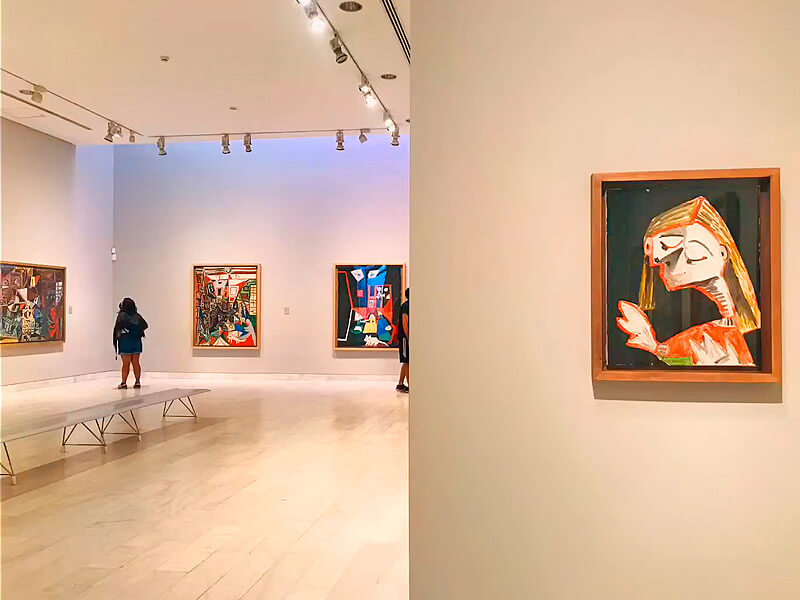
Picasso arrived in Barcelona as a young teenager. It was in this city that he held his first exhibition at the legendary Els Quatre Gats, a hub for the bohemian intelligentsia of the time. The museum, housed in five contiguous medieval palaces on Montcada Street, is a testament to his connection with Barcelona, a city that watched him evolve from a young prodigy to a global icon.
Walking through the museum’s galleries, it becomes evident that Picasso’s artistic journey was not a linear path. His early works, influenced by his father (a traditional painter himself), showcase remarkable skill in realism. The museum’s collection offers a window into Picasso’s soul, from his Blue Period masterpieces, deeply melancholic and introspective, to the cheerful compositions of his Rose Period.
One cannot overlook the series of 58 paintings based on Diego Velázquez’s Las Meninas. This collection, a jewel of the museum, underscores Picasso’s unquenchable thirst for innovation. By deconstructing this iconic artwork, he reimagined it through various perspectives, turning classical art on its head.
Yet, the museum isn’t solely about the artworks. It’s equally about Picasso’s Barcelona narrative. One can sense the pulse of the city in his works. The narrow alleys, the bustling markets, and the spirited Catalonian culture – all are mirrored in his canvases.
Visitors often find themselves engrossed in his academic sketches, a testament to his rigorous training at La Llotja, Barcelona’s school of Fine Arts. Here, Picasso, the student, learned, practiced, and honed his craft, laying the foundation for the avant-garde artist he was destined to become.
The Picasso Museum, beyond its role as a custodian of some of his most iconic works, is also a narrator of his life’s story. It beautifully interweaves his art with the topography of Barcelona, elucidating how deeply the city is ingrained in his masterpieces.
To those tracing the footsteps of Picasso in Barcelona, a visit to the places he frequented – like the historic Els Quatre Gats or his art school – culminates in this museum. It’s here that one fully grasps the profound influence Barcelona had on shaping one of the most transformative artists of the 20th century.
Before wrapping up your Barcelona itinerary, ensuring a stop at the Picasso Museum is non-negotiable. It’s not just about admiring the works of a genius. It’s about immersing oneself in an era, a movement, and the indomitable spirit of Picasso, all set against the backdrop of Barcelona’s rich tapestry.
For more details, scheduling a visit, and exploring temporary exhibitions, the Picasso Museum’s official website (www.museupicasso.bcn.cat) serves as a comprehensive guide.
Palau de la Música Catalana: Barcelona’s melodious Modernist gem
In a city studded with architectural marvels, the Palau de la Música Catalana stands out, not just as a beacon of Modernist grandeur but as a sanctuary for the soul-stirring power of music. Nestled in the bustling heart of the El Born district, this UNESCO World Heritage site encapsulates the spirit, history, and artistic flair of Barcelona.
Designed by the Catalan architect Lluís Domènech i Montaner, the Palau isn’t merely a concert hall; it’s a lyrical poem in architectural form. As you approach its façade, intricate mosaics, sculpted stone, and ornate ironwork demand your admiration, hinting at the artistic treasures inside.
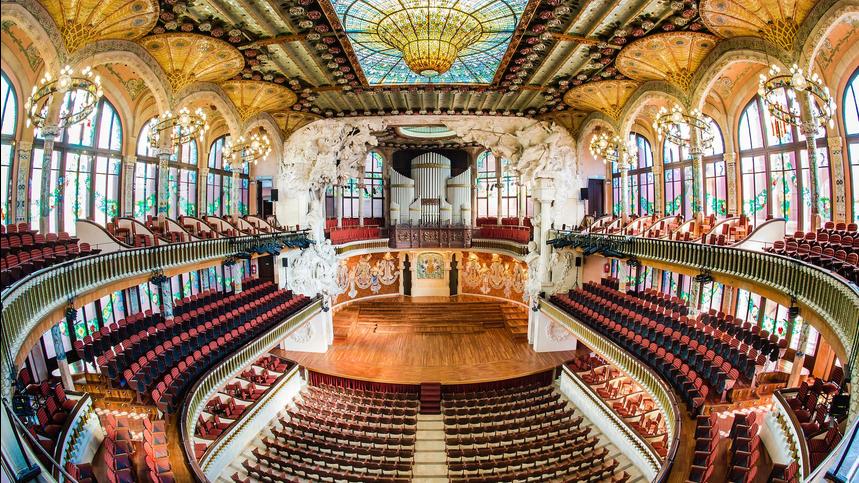
Stepping into the grand concert hall, you’re immediately enveloped by a visual and sensory symphony. Stained glass windows in vibrant hues bathe the interior in a soft, ethereal light, while the ornate ceiling, a masterpiece in itself, captivates with its inverted stained-glass dome. Dubbed the ‘skylight of the sun’, it splays a cascade of golden light onto the audience below.
The Palau’s design cleverly integrates natural motifs, from the floral sculptures that seem to bloom from walls and pillars to the intricate carvings that pay homage to Catalonia’s rich choral history. The stage, framed by statues of muses playing traditional instruments, feels alive, resonating with a century’s worth of musical memories.
But the Palau de la Música Catalana isn’t just a feast for the eyes. It’s an acoustical marvel. The hall’s design ensures that every note, from the delicate trill of a flute to the powerful crescendo of an orchestra, reaches every corner with impeccable clarity. Over the years, it has reverberated with the melodies of world-renowned orchestras, choirs, and soloists.
While its dedication to classical music is unwavering, the Palau’s repertoire is diverse, embracing jazz, flamenco, and world music. This commitment to musical inclusivity mirrors Barcelona’s own multicultural tapestry.
For those keen on diving deep into the Palau’s history and architectural wonders, guided tours offer an immersive experience. From stories of its inception to anecdotes about legendary performances, the Palau, as narrated by its passionate guides, becomes a living entity.
Beyond its walls, the surrounding area is equally enchanting. The narrow, medieval streets of El Born are brimming with tapas bars, artisan boutiques, and historical landmarks, making it the perfect locale to continue your Barcelona exploration post-concert.
In a city where art and life meld seamlessly, the Palau de la Música Catalana embodies Barcelona’s soul. It’s a place where Modernist architectural genius meets the timeless allure of music, creating a harmonious symphony that resonates deeply with all who visit.
For tickets, event schedules, and more about the Palau’s storied past, their official website (www.palaumusica.cat) offers a wealth of information.
Museum of Contemporary Art and Centre of Contemporary Culture: the vanguard heartbeat of El Raval
Barcelona, with its blend of medieval charm and modern energy, boasts an avant-garde spirit that finds its pulsating core in El Raval. Here, the Museum of Contemporary Art (MACBA) and the Centre of Contemporary Culture (CCCB) stand as twin sentinels of the city’s commitment to cutting-edge artistic expression.
With its sleek, white façade and expansive glass windows, the MACBA, designed by the renowned American architect Richard Meier, is an architectural marvel. But beyond its outer beauty, it is a treasure trove of post-1945 contemporary art. The vast, luminous interiors provide the ideal backdrop for a collection that showcases both international and local artists. From pop art to minimalism, from conceptual art to abstraction, the museum captures the myriad facets of the contemporary art scene.
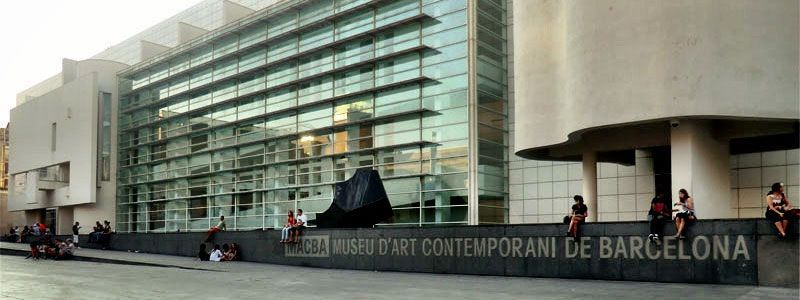
Interactive installations, vibrant paintings, evocative sculptures, and multimedia displays — every medium is a narrative of modern artistic thought. Regularly rotating exhibitions ensure that the content remains fresh, providing repeat visitors with a novel experience every time. Workshops, film screenings, and performance arts breathe life into the space, making art a living, evolving entity at the MACBA.
A stone’s throw away, the CCCB is no less magnificent. Housed in the former Casa de Caritat, this institution perfectly blends the old with the new. While retaining some elements of its historic architecture, the centre has undergone significant modern renovation, creating a harmonious dialogue between past and present.
The CCCB is not just a museum; it’s a vibrant cultural laboratory. Its mandate goes beyond mere exhibition, delving deep into research, reflection, and dissemination of contemporary culture. Through a rich tapestry of exhibitions, debates, festivals, concerts, and more, it fosters a space of creative dialogue and intellectual engagement.
An emblematic representation of this spirit is the annual LOOP Barcelona event, a celebration of video art, films, and media. This event and many others have positioned the CCCB as a nerve center for contemporary thought in Europe.
El Raval itself reflects the ethos of these institutions. Once a district with a dubious reputation, it has undergone a renaissance, transforming into a buzzing cultural hotspot. Cobbled streets now resonate with the sounds of hip cafés, independent boutiques, and vibrant street art. The MACBA and the CCCB, with their outreach initiatives, have played pivotal roles in this transformation, making art and culture accessible to the community.
In a way, the coexistence of these two institutions mirrors Barcelona’s own diverse character — where the traditional seamlessly intertwines with the contemporary, where history is in constant dialogue with the future.
For those seeking to understand the modern soul of Barcelona, a visit to the MACBA and the CCCB is indispensable. They don’t just house art; they embody the dynamic spirit of innovation, reflection, and revolution.
For detailed information on exhibitions, events, and timings, consider visiting the official websites of MACBA and CCCB.
Barcelona unveiled: the 10 jewels you can’t miss
Barcelona, a sprawling coastal city nestled between the deep blue of the Mediterranean and the rugged Collserola hills, is more than just Spain’s second-largest city. It’s a vibrant tapestry of history, art, architecture, and culture that compels exploration. Here’s a wrap-up of the top 10 jewels every traveler to Barcelona should set their sights on:
- La Sagrada Familia: The magnum opus of the celebrated architect Antoni Gaudí, this basilica has been under construction for over a century. Yet, every unfinished pillar and façade tells a story of devotion and unmatched architectural genius.
- Las Ramblas: A bustling boulevard in the heart of the city, where street performers, kiosks, and historical landmarks vie for your attention.
- Magic Fountain of Montjuïc: A spellbinding display of water, light, and music. When evening falls, the fountains dance in an unforgettable spectacle.
- Barri Gòtic (Gothic Quarter): Meandering lanes, medieval architecture, and hidden squares that take you back centuries.
- Park Güell: Another Gaudí masterpiece, this public park is a mosaic of colorful tiles, whimsical sculptures, and panoramic views of the city.
- National Art Museum of Catalonia: A majestic journey from Romanesque frescoes to the modernist wonders, encapsulating Catalan art’s essence.
- Joan Miró Foundation: Dive deep into the surreal world of Joan Miró and understand the legacy of one of Catalonia’s most iconic artists.
- Picasso Museum: Witness the evolution of the legendary Pablo Picasso and explore his deep roots with Barcelona.
- Palau de la Música Catalana: A mesmerizing concert hall that’s as much a feast for the eyes as for the ears. The stained glass, sculptures, and mosaics are a testament to the Modernisme movement.
- MACBA & CCCB: The twin beacons of contemporary art and culture in El Raval. From cutting-edge exhibitions to stimulating debates, these institutions are where Barcelona’s modern soul thrives.
Why Barcelona stands apart
Barcelona isn’t just another European city; it’s a feeling. A melange of cultures, it’s where the old coexists harmoniously with the new. Every brick and cobblestone, every brushstroke in its myriad museums, resonates with stories.
With its sun-kissed beaches, mouthwatering Catalan cuisine, and a nightlife that pulsates with fervor, Barcelona offers a multi-sensory experience. Add to this a calendar teeming with festivals like La Mercè or Sant Jordi, and you realize there’s never a dull moment in the city.
Furthermore, the locals, or ‘Barcelonins’, with their warm hospitality, further the city’s charm. They’re fiercely proud of their Catalonian heritage, ensuring visitors get a taste of the local flavor, whether it’s through a plate of ‘pa amb tomàquet’ or a passionate flamenco performance.
In conclusion, calling Barcelona one of the world’s best cities to visit isn’t mere hyperbole; it’s a well-deserved accolade. Whether you’re an art aficionado, a history buff, a foodie, or just someone looking to soak in some Mediterranean sun, Barcelona welcomes you with open arms. Its ten jewels, highlighted here, are merely the beginning. Dive deeper, and who knows what other treasures you might unveil?
For detailed itineraries and more insights, consider browsing SpainSeeker.com for a comprehensive guide to making the most of your Barcelona trip.





